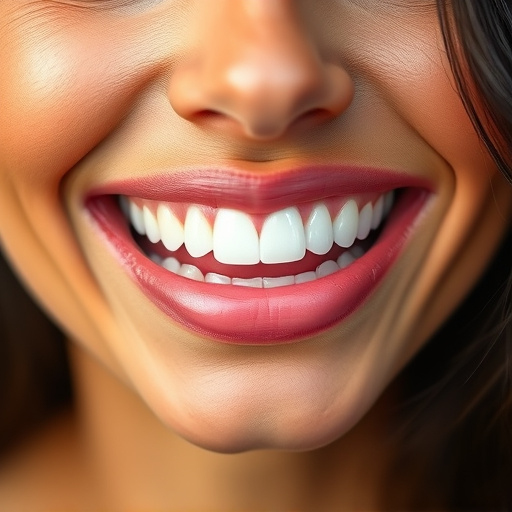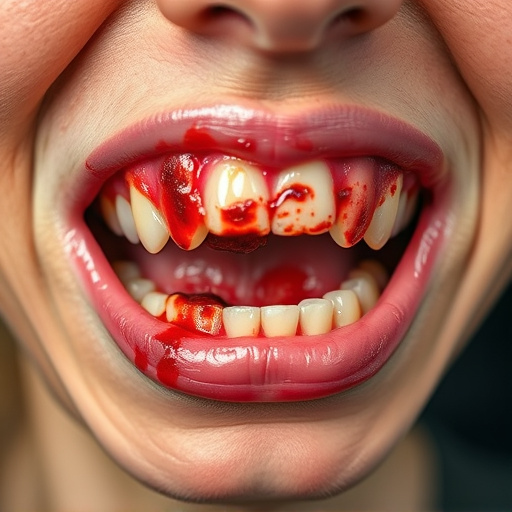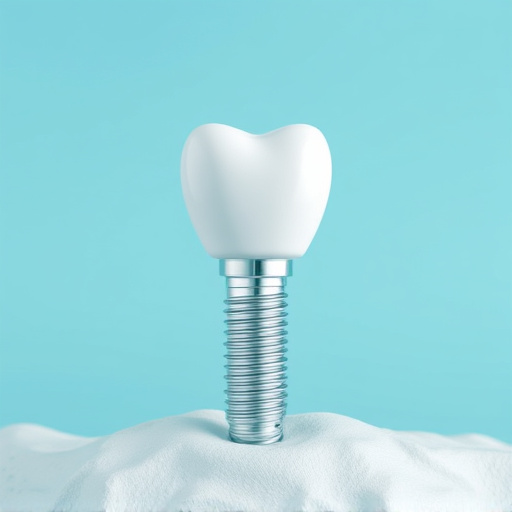Regular Dental Checkups and Cleaning: Preventing Tooth Loss
Regular dental checkups and cleanings are vital for maintaining oral health. Dentists perform compre…….
Dental checkups and cleanings are fundamental practices in oral healthcare, serving as the cornerstone of maintaining healthy teeth and gums. This article aims to provide an extensive exploration of this essential process, delving into its various aspects, global impact, and future potential. By understanding the significance of regular dental visits and professional cleanings, individuals can make informed decisions regarding their oral health and contribute to a worldwide effort to improve dental well-being.
Definition: A dental checkup and cleaning is a routine oral healthcare procedure involving a comprehensive examination by a dentist or dental hygienist, followed by professional teeth cleaning. It includes various components aimed at preventing and treating dental issues, promoting overall oral health, and maintaining a bright, healthy smile.
Core Components:
Oral Examination: Dentists visually inspect the patient’s mouth, checking for tooth decay, gum disease, oral cancer, and other abnormalities. This may include using dental instruments to examine teeth and gums up close.
X-rays: Radiographic images are taken to capture detailed views of teeth and gums, helping identify issues not visible during a manual examination. These images aid in early detection of cavities, bone loss, or impacted teeth.
Professional Teeth Cleaning (Scalting and Polishing): This involves the removal of dental plaque and tartar buildup using special tools. Scaling involves removing plaque and calculus from below the gum line, while polishing smooths the tooth surface, removes stains, and prevents future plaque adhesion.
Fluoride Treatment: Fluoride is a mineral that strengthens tooth enamel, making it more resistant to decay. Dentists may apply fluoride treatments as a gel or foam to help protect teeth from future cavities.
Oral Hygiene Education: Dental professionals educate patients on proper brushing and flossing techniques, providing personalized guidance to ensure effective oral care at home.
Historical Context: The practice of dental checkups has evolved significantly over the years. Ancient civilizations like the Egyptians and Greeks had basic forms of dental care, but modern dentistry as we know it today began to take shape in the 19th century. The introduction of anesthesia, X-ray technology, and advanced cleaning tools revolutionized dental procedures, making them less painful and more effective.
Dental checkup and cleaning services are widely adopted worldwide, but access and frequency vary across regions. According to the World Health Organization (WHO), oral diseases affect millions of people globally, with dental caries being one of the most common chronic conditions. The organization estimates that over 3.5 billion people worldwide lack access to adequate oral health care.
Regional Disparities:
High-Income Countries: In developed nations like the United States, Canada, and many European countries, regular dental checkups are common, with a focus on preventive care. The American Dental Association (ADA) recommends biannual visits for most individuals.
Middle and Low-Income Countries: Access to dental services is often limited in these regions due to a lack of infrastructure, trained professionals, and financial constraints. For instance, many countries in Africa and parts of Asia have low dentist-to-population ratios, making routine checkups less accessible.
Emerging Trends:
Teledentistry: The rise of tele dentistry has made dental care more accessible, especially in rural or underserved areas. Virtual consultations, remote monitoring, and teledentistry services are gaining popularity, allowing patients to receive guidance and diagnoses from the comfort of their homes.
Digital Oral Health Technologies: Innovative technologies like smart toothbrushes, oral health apps, and at-home dental scanners are transforming self-care routines. These tools provide real-time feedback, educate users, and encourage healthier habits.
The dental checkup and cleaning market is a significant component of the global healthcare industry, with varying economic dynamics across regions.
Market Size and Growth: According to a report by ResearchAndMarkets, the global dental hygiene market size was valued at USD 34.7 billion in 2021 and is projected to grow at a CAGR of 5.7% from 2022 to 2029. This growth is attributed to increasing oral health awareness, rising disposable incomes, and advancements in dental care technologies.
Investment Patterns: Private equity firms and venture capitalists have shown interest in dental healthcare startups, particularly those focused on telemedicine, digital dentistry, and oral health education platforms. These investments drive innovation and improve access to dental services.
Cost-Benefit Analysis: Regular dental checkups and cleanings are cost-effective in the long term. The American Dental Association estimates that preventive care measures can save Americans nearly $15 billion annually in dental treatment costs. Early intervention and proper oral hygiene practices reduce the need for extensive, more expensive procedures.
Technology has revolutionized dental checkup and cleaning practices, enhancing efficiency, accuracy, and patient experience.
Digital Imaging: Digital X-ray machines offer higher resolution images compared to traditional film X-rays, providing dentists with detailed insights into oral health. This technology reduces radiation exposure and allows for faster, more accurate diagnoses.
Laser Dentistry: Lasers are now used for various dental procedures, including enamel shaping, tooth whitening, and gum disease treatment. Laser dentistry is precise, minimally invasive, and often results in less patient discomfort and faster healing times.
Oral Cancer Screening: Advanced oral cancer screening technologies, such as VELScope and Light-Emitting Diode (LED) lighting, help dentists detect early signs of oral cancer. These tools enhance visualization, enabling earlier intervention and potentially improving treatment outcomes.
AI and Machine Learning: Artificial intelligence is being integrated into dental practices for tasks like analyzing X-rays, identifying oral diseases, and predicting patient needs. AI algorithms can assist in diagnosis, treatment planning, and personalized care recommendations.
Government policies and regulations play a crucial role in shaping the availability and quality of dental checkup and cleaning services.
Licensing and Professional Standards: Dental professionals must obtain licenses to practice, ensuring they meet educational and competency requirements. Regulatory bodies set standards for dental education, continuing education, and professional conduct.
Health Insurance Coverage: Many countries have policies mandating dental coverage in national health insurance schemes. These policies ensure that dental care is accessible to a broader population, promoting oral health equity.
Public Health Initiatives: Governments worldwide implement public health programs focused on oral disease prevention. These initiatives often include school-based dental programs, community outreach, and education campaigns to raise awareness about the importance of regular dental checkups.
Despite its numerous benefits, dental checkup and cleaning face several challenges and criticisms that require attention.
Accessibility Issues: One of the primary concerns is ensuring equal access to dental care for all socioeconomic groups. Cost barriers, lack of nearby dental clinics, and limited professional resources hinder regular checkups, particularly in underserved communities.
Stigma and Fear: Dental anxiety is a significant barrier to oral healthcare. Many individuals avoid dental visits due to fear or negative past experiences, leading to delayed treatment and potential complications.
Over-Diagnosis and Over-Treatment: There are concerns about over-diagnosis, where dental professionals identify conditions that may not require immediate attention, potentially leading to unnecessary treatments. Balancing preventive care with diagnostic precision is essential.
Addressing Criticisms: To overcome these challenges:
Policy Interventions: Governments can implement policies to subsidize dental care, improve access in underserved areas, and regulate pricing to make services more affordable.
Community Engagement: Community-based oral health programs, educational initiatives, and peer support groups can help reduce dental anxiety and encourage regular checkups.
Professional Development: Continuous education for dental professionals on patient communication, anxiety management, and evidence-based practices can improve patient experiences and build trust.
Case Study 1: Community Dental Health Programs in India
In rural areas of India, non-profit organizations have implemented successful community dental health programs. These initiatives involve mobile dental clinics that travel to remote villages, providing basic dental checkups, cleanings, and educational sessions. The programs have improved access to oral care for underserved populations, leading to increased awareness and better oral health outcomes.
Case Study 2: Teledentistry in Rural Australia
Australia’s Country Dental Service has pioneered tele dentistry, offering virtual consultations and remote monitoring to patients in rural areas. This model has enabled dentists to provide ongoing care, reduce travel costs for patients, and improve access to specialized dental services in remote communities.
Case Study 3: Oral Health Education in Schools (United Kingdom)
The UK’s National Health Service (NHS) has implemented comprehensive oral health education programs in schools. These initiatives teach children about proper brushing techniques, flossing, and healthy eating habits. Regular dental checkups and rewards for good oral hygiene have contributed to improved dental health among school-aged children.
The future of dental checkup and cleaning is promising, with several emerging trends and growth areas:
Digital Transformation: Digital technologies will continue to play a significant role in dentistry. Virtual consultations, augmented reality (AR) for surgical guidance, and AI-driven diagnostic tools are expected to become more prevalent, enhancing patient care and access.
Personalized Medicine: Dental care is moving towards personalized treatment plans based on individual genetic profiles, lifestyle factors, and oral microbiome analysis. This approach aims to provide tailored prevention and treatment strategies.
Preventive Care Focus: There is a growing emphasis on preventive dentistry, with a focus on early detection and intervention. Regular checkups, combined with advanced diagnostic tools, will enable dentists to catch issues before they become severe, reducing the need for extensive treatments.
Global Collaboration: International collaboration in dental research and education can lead to improved global oral health standards. Sharing best practices, technologies, and resources can address disparities and elevate the quality of dental care worldwide.
Dental checkup and cleaning are essential components of comprehensive oral healthcare, offering preventive and curative benefits. This article has explored various aspects, from historical context and global impact to technological advancements and policy considerations. By addressing challenges and showcasing successful case studies, it is evident that regular dental visits play a pivotal role in maintaining optimal oral health.
As technology continues to evolve and global collaborations strengthen, the future of dental care looks promising, with improved access, personalized treatments, and enhanced prevention strategies. Individuals who prioritize dental checkups contribute not only to their own well-being but also to the overall improvement of oral healthcare globally.

Regular dental checkups and cleanings are vital for maintaining oral health. Dentists perform compre…….

Regular dental checkups and cleanings are crucial for maintaining oral health, acting as an early de…….

Regular dental checkups and cleanings are essential for maintaining oral health, preventing costly p…….